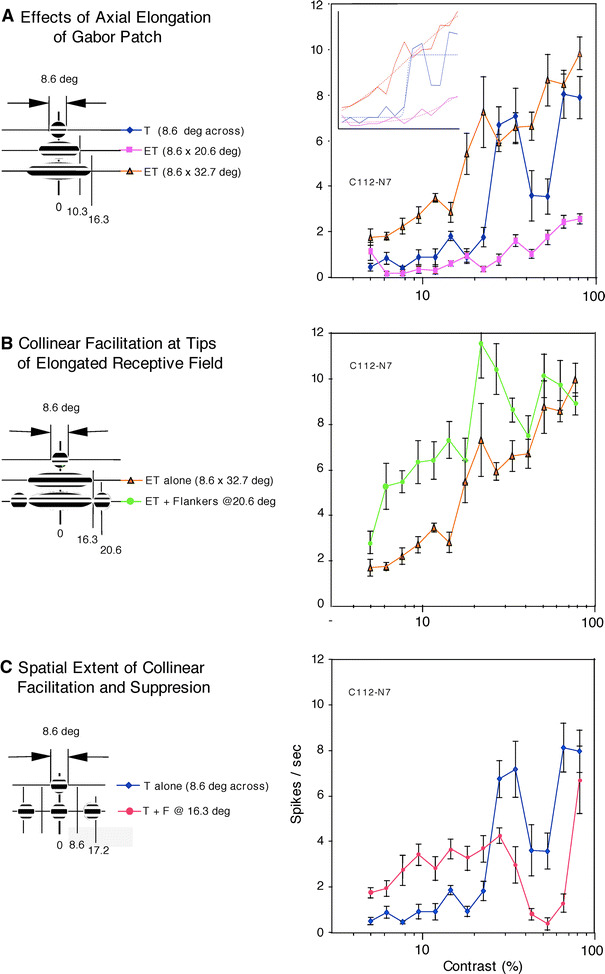Fig. 1.

The spatial extent of collinear facilitation and suppression tested with the elongated target (ET) made of Gabor patches elongated along the collinearity axis and compound stimuli made of round Gabor patches (8.6 deg across). The data shown are from a cell (C112-N7) that was recorded from layer 5 in the medial bank. a Contrast response curves obtained by stimulation with ETs having different aspect ratios (1:1, 1:2.4, and 1:3.8). When the ratio was 1:2.4 (purple squares), the maximal extent of the elongated Gabor was 10.3 deg from the RF center, the contrast response curve showed a very shallow slope indicating the presence of strong suppression at moderate-to-high contrast. With greater elongation (aspect ratio 3.8, brown triangles), the Gabor patch reached 16.3 deg from the RF center, a distance corresponding to the site of the flankers’ center (c, red circles), we obtained strong facilitation at low-to-moderate contrast. The response magnitude in spikes per second was plotted against percent contrast values on a logarithmic scale. Error bars are ±1 SEM (standard error of means). These conventions apply here and in others. Inset sigmoid curve fit, shown in dotted lines, for each of the three contrast response curves in solid lines. b Facilitation evoked by concurrent presentation of high-contrast flankers with the maximally elongated Gabor patch (aspect ratio 3.8, green circles). Contrast response function is shifted to the left, indicating the presence of pure contrast gain control. c Contrast response curves obtained under different stimulus configurations, as schematically shown in the inset left of the curves. T is the target Gabor patch placed on the RF (blue diamonds). F is a pair of flankers placed at 16.3 deg from the center of the RF center. The properties of flanker Gabor patches were identical to those of the target, except that the flanker contrast was always fixed high while the target contrast ranged widely as shown on the abscissa of the diagram. When the cell was stimulated with the target plus collinear, high-contrast flankers, responses were enhanced at low-to-moderate target contrast and suppressed at high target contrast (red circles). The cell was thus classified as a type-I cell of Chen et al. (2001)
